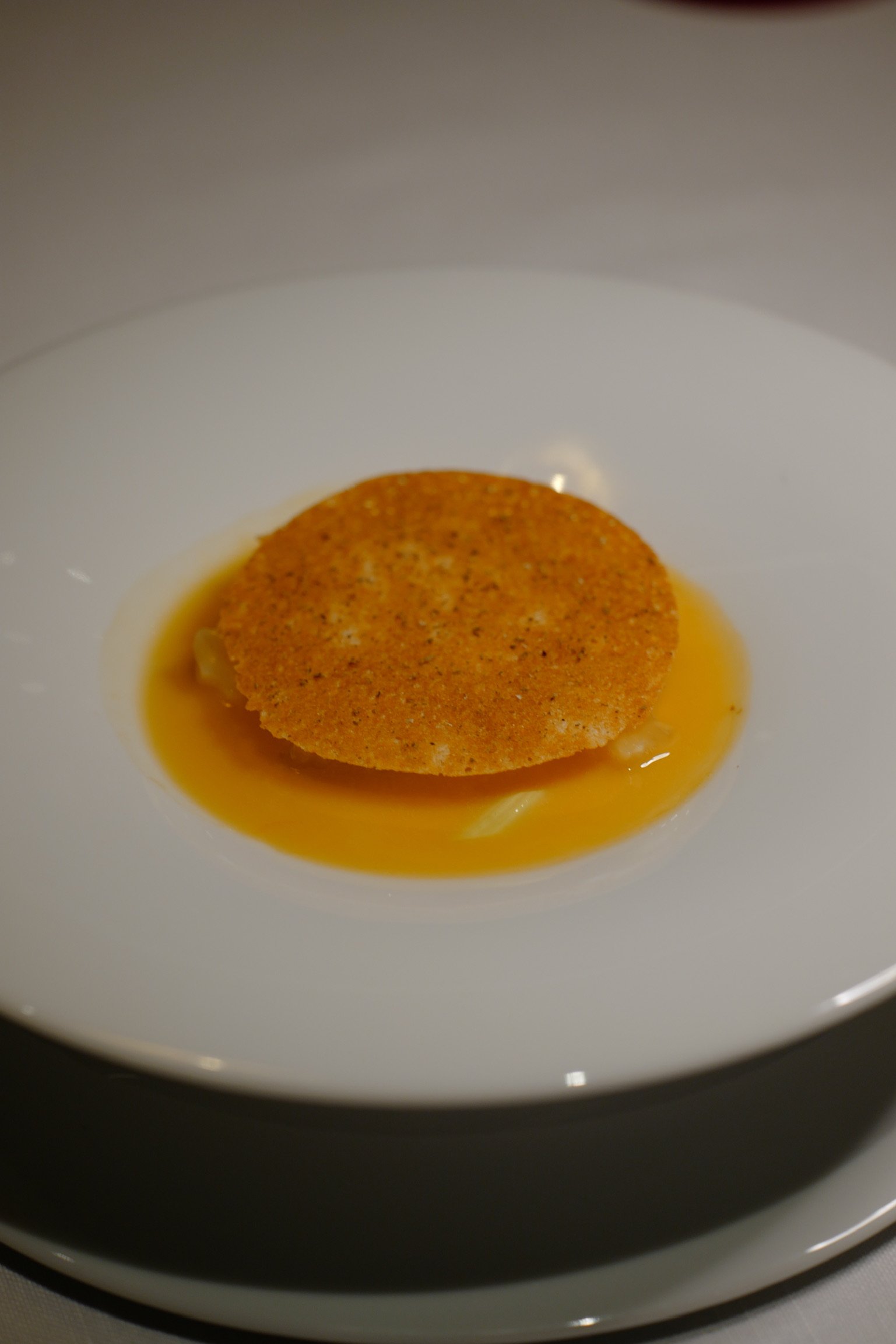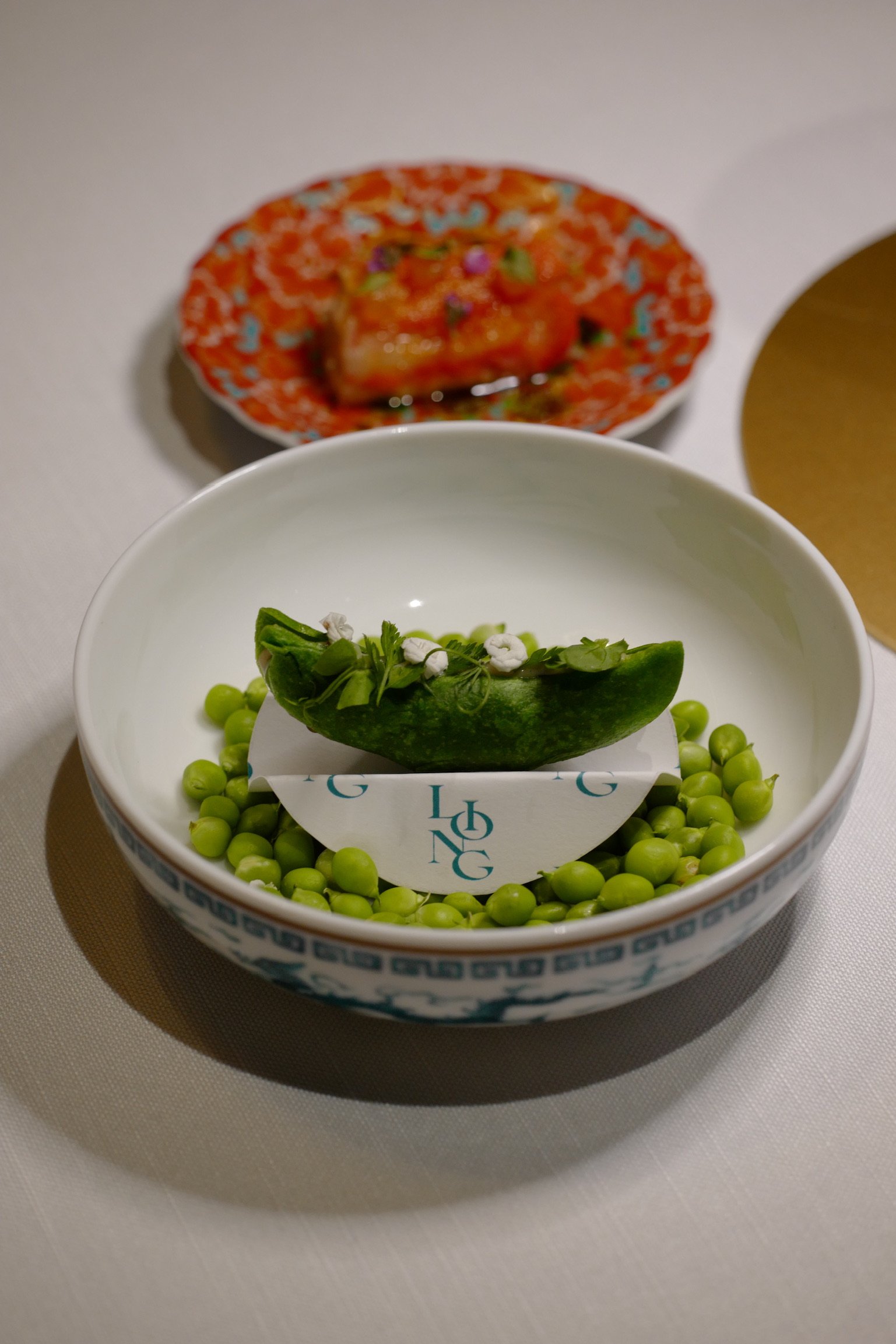LingLong
On January 24, 2022, the Beijing Michelin Guide was announced, and my beloved restaurant Ling Long was finally awarded one star. Chef Jason Liu Hesen also received the Michelin Young Chef Award.
My interest in Ling Long began during the bistro 3 period, when the young chef’s poached fish dish became famous in Beijing. After some ups and downs, closures for research trips, he opened this more mature experimentation ground called Ling Long.
Since its opening at the end of 2019, I have flown three times in the past year to dine at Ling Long and have tasted almost every dish on the menu. My affection for this restaurant is as simple and natural as "coming home for a meal."
I like Ling Long for three reasons:
1. Thoughtful cooking. There are always new combinations and trials, and one can often taste the character and thought processes of the chef's team in the dishes.
2. Continuous improvement. Even when eating the same menu, each visit reveals iterations of a dish or even a single ingredient, constantly fresh.
3. The humanity of the service team. Although I'm not a regular, I'm remembered, always arranged to sit near the glass kitchen, and often greeted warmly. The team's warm interaction isn't limited to regulars; every table present seems to be well cared for.
Thus, I hold Ling Long in very high tolerance, and my feelings go beyond simple praise or criticism to a strange sense of accompanying growth, a mutual understanding between a young diner and a young chef and restaurant team.
For two years, there has been a debate about what kind of restaurant Ling Long is. The simplest classification is fusion or new-style Chinese cuisine. Many see it as a synonym for avant-garde ideas and fine dining. However, during my last visit, I suddenly had a different understanding of the restaurant's essence:
It appears avant-garde and modern but is essentially warm and nostalgic.
First-time visitors to Ling Long, walking through the quiet hotel building into this futuristic space, eating deconstructed dishes, might think it's cutting-edge, trendy, contemporary art-like.
But I think all this is just a facade. In fact, the restaurant has a core completely different from its appearance – it's warm, homey, and a recollection of childhood memories. Jason's character is more nostalgic and home-loving than trendy.
One cannot resist the flavors cherished from childhood, which is the function of food as a time machine. Dining here, some elements like five-spice powder and chili oil, the photos on the oyster sauce box, and the seasoning of the sugarcane chicken are all expressions of reminiscence.
Rather than calling it an avant-garde restaurant, it's better to say it’s a place where a new generation of young chefs nostalgically honor classics in their own way.
Next, I’d like to record the chronicles of a restaurant's dishes from the perspective of a diner.
Let's start with my favorite dishes, which are also the main courses:
Oyster and Beef, a reinvention of oyster sauce stir-fried beef. A4 grade Shandong Wagyu rib-eye, marinated and flash-fried then seared, maintaining a perfect crispy crust while being precisely medium-rare inside. The homemade oyster sauce is very concentrated, bringing the taste of the sea, reflecting the main idea of "letting the taste buds travel mountains and seas." The mild chili oil brings a fragrant mouthful, and the sweetness of pearl onions closes the dish’s flavor system.
Chicken Sauce Yellow Croaker, currently claimed to be semi-wild and semi-cultivated yellow croaker mainly comes from three places: Zhulu Island in Yuhuan, Taizhou, copper net deep-water yellow croaker from Da Chen Island, Taizhou, and Yiyu in East Fujian. Ling Long probably uses Yiyu. For non-pure wild yellow croaker, the competition is mainly in seasoning. The chicken sauce is further enriched with dried scallops, scallops, crab meat, and the crowning touch is a few kumquats on top – small yet bursting with sweet and sour juice in the mouth, unforgettable. This yellow croaker is the best executed among all non-pure wild yellow croakers I've ever had. The only drawback is that the thicker parts lack some flavor.
Vinegar Aroma Pigeon, with the pigeon meat tender and fresh at medium-cooked, completely free of gamey taste after processing. The pigeon is more of a tool than a main dish, as the taste is provided by Zhenjiang vinegar and a sauce made with pigeon bones and chestnut puree. The dish is topped with five-spice powder crumbs and green onions for a salty fragrance and texture, with pickled plum slices on the side for a rich and balanced taste.
True Sea Bream Sashimi, if Oyster and Beef is a stunning ordinary dish, then this True Sea Bream Sashimi is a harmonious complexity. Thinly sliced sea
bream with a fresh spice made from Puning bean sauce, peanut oil, and garlic crisps, even reminding me of the spicy seasoning powder taste of my childhood favorite snack, crispy noodles.
Now let's talk about some other main courses:
Star Grouper, having eaten countless star groupers from childhood to adulthood, only a few restaurants can truly prepare this fish well. Ling Long’s dish can score 80 points, selecting the best part of the star grouper, white and flawless, cooked at low temperature then steamed, with excellent texture, and the hint of spiciness at the end lifts the spirits. The plating is very Chinese, reminiscent of the idyllic scene of fish playing among lotus leaves.
Sour Soup Fish, the journey to new ingredients inevitably leads to the borders and highlands. This dish’s sour soup is made with Guizhou's sour white broth, with a more elegant and reserved acidity (for example, Yunnan's sour soup doesn't emphasize fermentation but uses the acidity of sour papaya and tree tomatoes). The grouper is doused with hot oil and then grilled to achieve a crispy scale effect, paired with litsea foam for finishing.
Sugarcane Chicken, an old-school Taiwanese flavor, the Shandong spring chicken is deboned, smoked with sugar and sugarcane residue, then steamed. The large chicken leg is decorated with colorful garnishes (chicken oil croutons, purple flowers, green onions, etc.), which looks very cute. The chicken skin has a strong smoky and sugarcane flavor, while the chicken meat is slightly lacking (perhaps too thick), paired with honeysuckle, which is probably a substitute for lettuce and a color match, but it's hard to chew.
Dried Tangerine Peel Abalone, the interesting part of this dish is the switcheroo, using fresh Dalian abalone instead of dried abalone, cooked with dried tangerine peel, scallops, and chicken broth for two days and nights to simulate the texture of dried abalone. Paired with Lipu taro puree to add aftertaste.
Eel and Porcini Mushroom, pairing eel with a sauce made from porcini mushrooms and Yunnan coffee, this association I find ingenious, reminiscent of a lobster dish eaten at DV in 2021 with bilimbi crumbs and coffee foam on top of the lobster, using texture and temperature to segment the taste layers. Ling Long's dish creates a crunchy texture with crispy rice and fried onion slices, the fish skin is rich and sticky, with porcini mushrooms seemingly the main character but actually hidden in every corner. I think the coffee could have been presented more intensely to better highlight the "adult flavor" of the dish.
Lobster, the South African lobster is tender yet firm, seasoned with bean sauce, paired with crispy rice crust to enhance the layers of texture, and tomato powder that corresponds in color with the lobster meat and brings a touch of fun. Compared to the traditional Chinese lobster dishes (like three-onion lobster), which emphasize the "wok hei" (usually manifested by high heat and steam), this lobster is served at a lower temperature.
And some appetizers:
Crab Dumplings, a deconstructed dish, breaking down the elements of crab roe, crab vinegar, and ginger tea, then recombining them. The Italian dough is filled with a bit of clarified butter, and the sauce is made from swimmer crab, sweet ginger, and rice vinegar, with a tangy overall taste. The crab roe seems a bit lean at the end of the crab season; I suggest removing the rice vinegar from the sauce and trying an updated version of "crab vinegar" by dropping aged Italian balsamic vinegar at the table.
Sturgeon, for caviar factories, sturgeon is usually discarded for its flesh after harvesting the roe. Jason uses the whole body of the sturgeon to cook in an eco-friendly concept (and I must say this full utilization of the animal is very Jason). After curing, it’s slow-cooked at low temperatures and then cold-smoked, but honestly, the discarded flesh isn't tasty. Prepared in a cold canned food style, it has a hint of fishiness, paired with a foam made from crab shell and yogurt sauce, very French cuisine in feel, and the carving of the little black fish could be more detailed.
Chicken Soup with Fish Maw, a traditional soup with a choice of three types of chicken shreds: black chicken, black-footed old chicken, and butter old hen, cooked with bamboo shoots and fish maw shreds. Compared to those famous fish maw chicken pots, this soup is far more substantial, with steamed egg whites underneath reminiscent of old-school Cantonese cuisine. For the orchid egg, I think any fully cooked method is a waste as the egg is most tender when soft-boiled.
Vinegar Jellyfish, a deconstructed dish, with old vinegar made into a jelly
covering the jellyfish, paired with a celery root puree with added cream, carrying a summery vibe.
Lu Shui Duck, another deconstructed dish, separating duck meat, gizzard, and duck brine, with duck liver mousse as the connecting point, sprinkled with green onions and pine nuts, paired with red rice crispy crackers, slightly salty in taste.
Chicken, Ham, and Clam Soup, initially a controversial new dish, aiming for purity in the broth, using only chicken, including black claw chicken cured for six days and dried for two days to make ham. The soup is pretty, but the "chicken" taste is too strong, aiming for the ultimate but forsaking balance... overall too salty. Later it was simplified into a complimentary soup before the meal. As a complimentary soup, it achieves better balance.
Some desserts, although many believe desserts are Ling Long's weakest part. Looking at the desserts over the years, they indeed seem to be taking a more gentle route now, lacking the assertive personality of the dark Sichuan pepper macaron and sandalwood ice cream era.
Whiskey Pie, the latest dessert, if the Coffee Eel is defined as an "adult dish," then this Whiskey Pie is probably a "real man's dessert," paired with ice cream and pecans. The barrel-aged Nantou whiskey chocolate pie has a very rich flavor, to the point that if you drove here, you might be driving under the influence on the way back.
Iron Goddess Flan paired with Wild Ginger Flower Ice Cream. Also from the 2021 dessert menu, still available in the latest season. Wild ginger flower is used with milk to make flan, paired with Iron Goddess tea syrup. Each ingredient sounds delicious, but when combined, the tea, flower, and milk aromas don't seem strong enough.
Yogurt Little Bomb, a very old-school dessert from when Ling Long first opened. Gellan gum skin encases the yogurt, with a medicinal taste upon biting.
Pineapple Cake. Also old, but it's what I consider the best dessert offering. Sweet and sour pineapple filling paired with salty egg yolk lava, the outer layer is crispy without falling apart, paired with White Rabbit candy coating. Simple and very Taiwanese, yet better than commercial retail offerings.
Sichuan Pepper Macaron, a shocking dessert at the time, with a dark style, where sweet and spicy coexist peacefully.
I believe this Michelin star is just the first for Chef Jason. Wishing you better and better in the new year :)
























